Modern Mythology: An Interview with Dimitris Karagiannakis
Culture — 01.11.22
Interview: Nino Sichinava
Portrait Photographer: Voytek Ketz
Lookbook Photographer: Mika Kailes
Creative Direction: Dimitris Karagiannakis
AI/Movement Direction: Malthus via Littledoom Studio
Models: Sakeema Crook, Jal Joshua, Madison Skye,
Jabari Versace, Alejandra Munoz, Aaron Porter, Kareen Brown
Hair: Kyosuke Tanzawa
Makeup: Toni Cameron
Set Design: Fillo Deportaberta
Production: Littledoom Studios
Shot at Sibling Studios
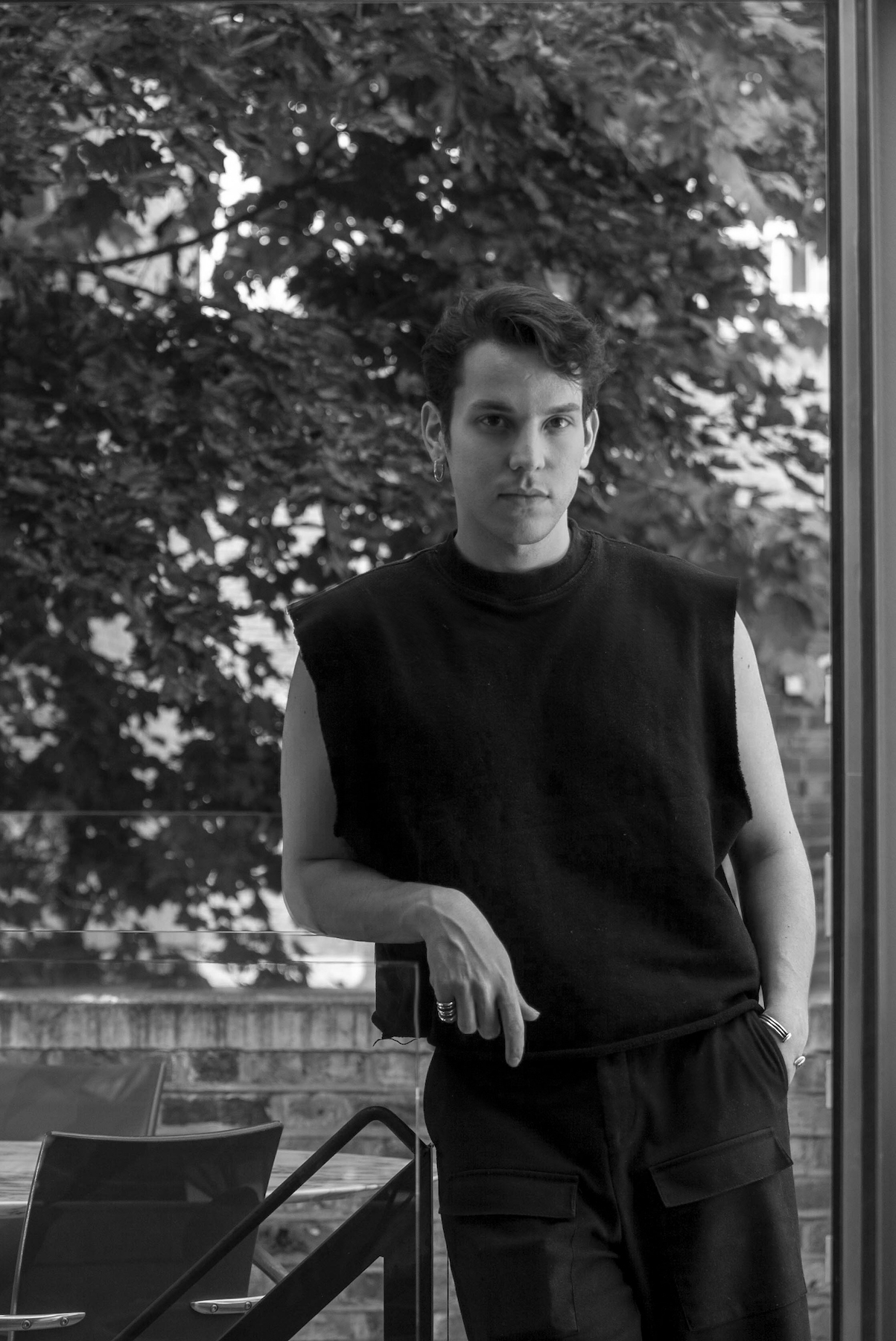 Dimitris Karagiannikis is a London-based fashion designer of Greek descent, who not only envisions fashion as a raw medium of human intercommunication but stands at the head of the brand that provides a safe place for diversity, gender inclusivity, queerness, and general celebration of beautiful human nature. Not long ago, Dimitris officially launched his brand Arakhne, based on the Greek myth of Arachne, the concept of the brand is based against patriarchal oppression, a celebration of female creation and fierce resistance, putting into center femininity of all kinds with its strength and allure.
Dimitris Karagiannikis is a London-based fashion designer of Greek descent, who not only envisions fashion as a raw medium of human intercommunication but stands at the head of the brand that provides a safe place for diversity, gender inclusivity, queerness, and general celebration of beautiful human nature. Not long ago, Dimitris officially launched his brand Arakhne, based on the Greek myth of Arachne, the concept of the brand is based against patriarchal oppression, a celebration of female creation and fierce resistance, putting into center femininity of all kinds with its strength and allure.
Before working towards a degree in womenswear at the Royal Academy of Arts, Dimitris used to study architecture. This multidisciplinary touch is quite visible in his work, as together with abstract garments, he creates very clean and neat silhouettes. Within this fusion, he finds different shapes, forms, and materials both in real and digital dimensions. With such dedication and ideas around his newly baked brand, he has already built a queer community around it. Even looking through the lookbook of Arakhne, it’s easy to spot some of London’s queer activists’ and creatives’ faces, whose appearance straightaway strangles with pride and empowerment.
Teeth sits down with Dimitris and talked about his concepts, practices, and plans for the future.
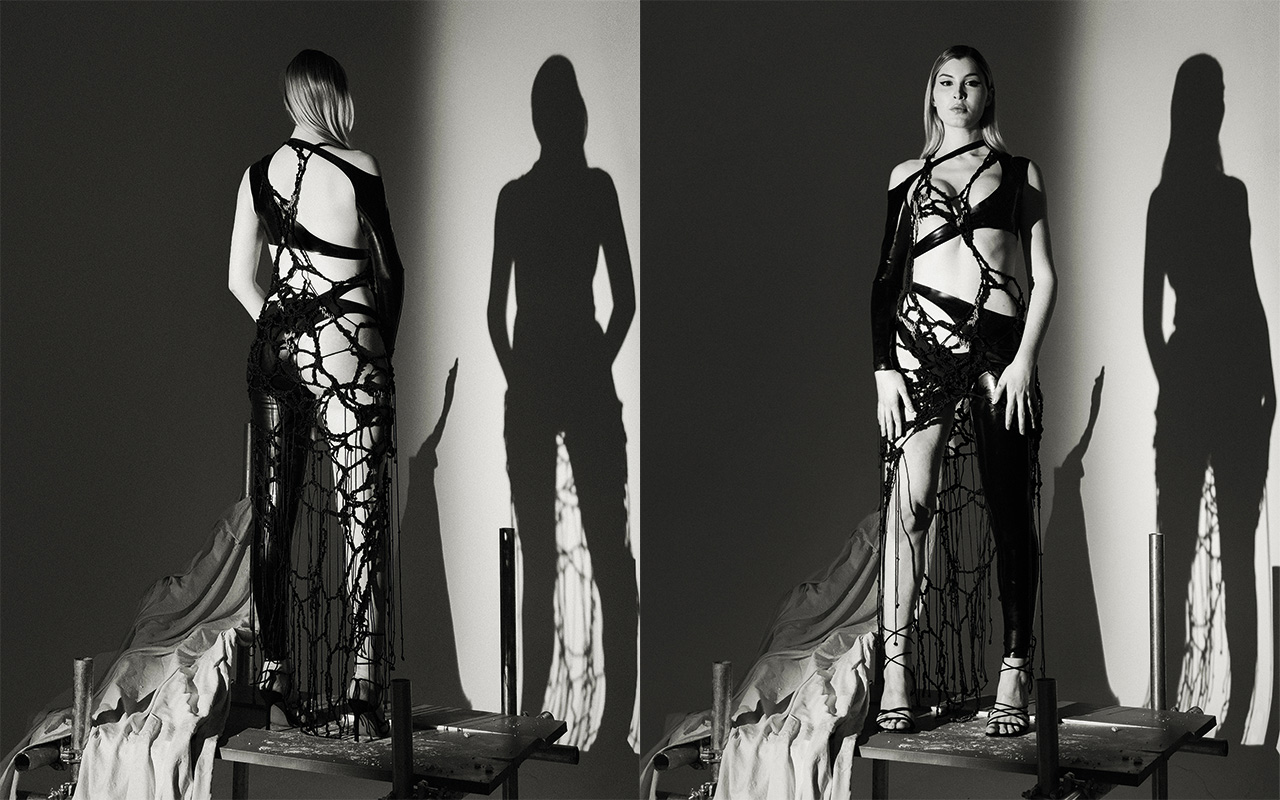 Let’s talk about your background. As we know, you previously studied architecture, and then joined MA Fashion Design at the Royal College of Art. Have you wanted to do fashion your whole life or did it come to fruition when you finished your BA?
Let’s talk about your background. As we know, you previously studied architecture, and then joined MA Fashion Design at the Royal College of Art. Have you wanted to do fashion your whole life or did it come to fruition when you finished your BA?
Indeed, my BA was in Architecture but even before graduating, I knew I wanted to transition into Fashion. Not because I did not love the role of the architect but because I did not care for the reality of the job.
How was the transition to Fashion Design after studying Architecture? There are numerous designers who previously studied Architecture, what do you think such a background gives to a designer?
It is interesting because I personally, do not think I ever really left architecture or started doing fashion. Surely, in terms of the institutional aspects of academia and specifically the organizational division of disciplines, I moved from one course to the other, but the reality is that the principles and methodologies apply to a wide range of topics.
You also have quite a wealth of skills and mediums, and some of them are digital. Why do you think it is important for young designers to possess these traits? How do you think fashion may evolve in these terms?
In fashion’s ever-changing landscape, it is important for all designers to understand that working in the digital is, indeed, a “skill” or rather a “tool”. It does not have to define the style of our work, but it is there to allow us to create with more precision, imagination, and efficiency. Personally, I mostly use digital tools in the sampling stage before going into the physical to achieve the perfect result with minimum waste. Whether I am fitting a suit or building a breastplate, it is the combination of contemporary and traditional techniques that optimizes my process. However, there are so many incredible designers out there that are rethinking the concept of fashion, projecting into the far future with wearable technologies or meta-garments that have already begun shaping the reality of younger generations.
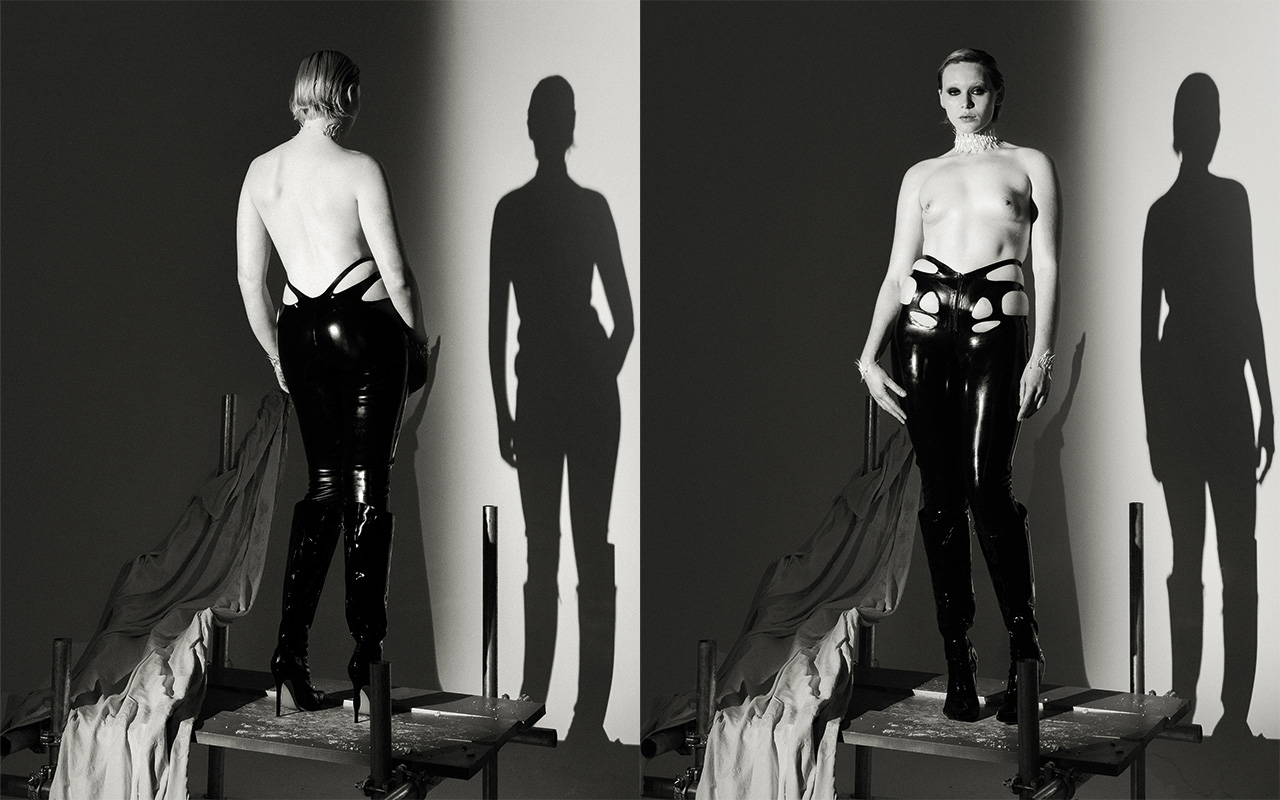
One of your biggest sources of inspiration is your own culture, specifically Greek mythology. Why do you find this topic especially appealing? When and how did you first link Greek mythology with fashion?
It’s interesting because I never really used to work with these narratives prior to my graduate collection. My practice was, in many ways, more autobiographical, drawing directly from my experiences in the queer community and heavily tapping into themes of male sexuality. When I started intellectualizing the work, that became quite uncomfortable; I felt that I was imposing my identity onto the women of my work. Instead, I wanted to represent the divine feminine so when I came across the myth of Arachne, the namesake of my brand, I felt an instant connection to the story and the sociopolitical significance of its development over the next millennia, the metamorphosis and the metaphors of patriarchal oppression, female creation, and fierce resistance. It represented beautifully the women that I know and love, who are at the center of everything I do, so it was natural to tap into that long tradition of tales and fables and perhaps find new meanings in the stories that I grew up with.
Let’s talk about your community and its importance and significance in your creations. You dedicate your work to queerness, femininity, and transness; it feels like you have a mission to uphold for LGBTQ+ people. How do you feel your work reflects that? And how as a designer do you put such intentions into your clothes?
I think it is important for fashion to be political, to understand that there has to be a commitment to issues that are clearly beyond clothes. While, as designers, we might not always be able to offer direct solutions to such complex problems, the least we can do is initiate a conversation and shift cultural perception to then spark systemic change. Working closely with my models/muses as well as other creatives from the early stages of the development process provides the opportunity to listen and understand how they want to be represented in the work. It is very personal. That’s the beauty of working with your friends! And while there is a bigger narrative that ties everything together, oftentimes their identities guide the result.
How do you think your personality is featured and presented in your works?
That is such a difficult question to answer. I am hyper-critical, so when I see the work changing it makes me wonder if I’ve changed that much since the previous collection or if I am discovering different aspects of myself. I think the common thread, however, is that it is very honest. My friends know all too well that I am direct yet kind, and I surely hope that translates into the work.
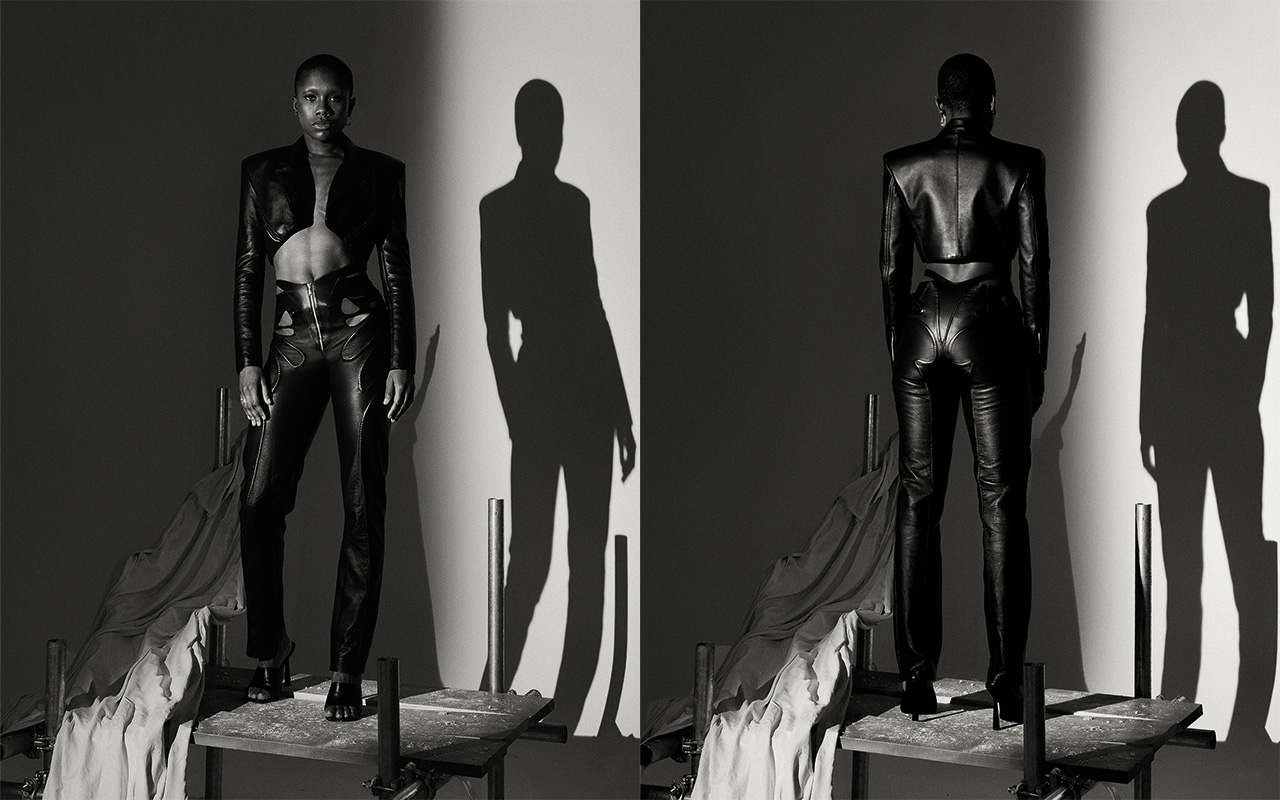
As a designer and artist, are there any challenges in womenswear and design that you’d like to fix or solve?
There are so many challenges in womenswear and the fashion industry at large that it becomes quite overwhelming. From the waste of resources to abusive behaviors and lack of diversity, every day in fashion we are reminded about the amount of work that needs to happen before we can be proud of the system we’ve created. Personally, I try to be as conscious as I can in my process and focus on quality over quantity; Slowing down and really honing in on what’s important.
Can you tell us about what inspires your creativity and imagination?
Every designer can attest that it is not a linear process and for the most part, it is not an active one either. I get quite obsessed with certain themes, a story that I want to tell, and from there, everything can trigger a side narrative. There are all these characters, the material, the product but also the impact! Often, ideas keep haunting you until you find the language to actualize them. My favorite thing, however, is hiding meanings in the work that connect it to a previous collection or an overarching trope. For most, it will remain unnoticed, but there’s something oddly satisfying about it.
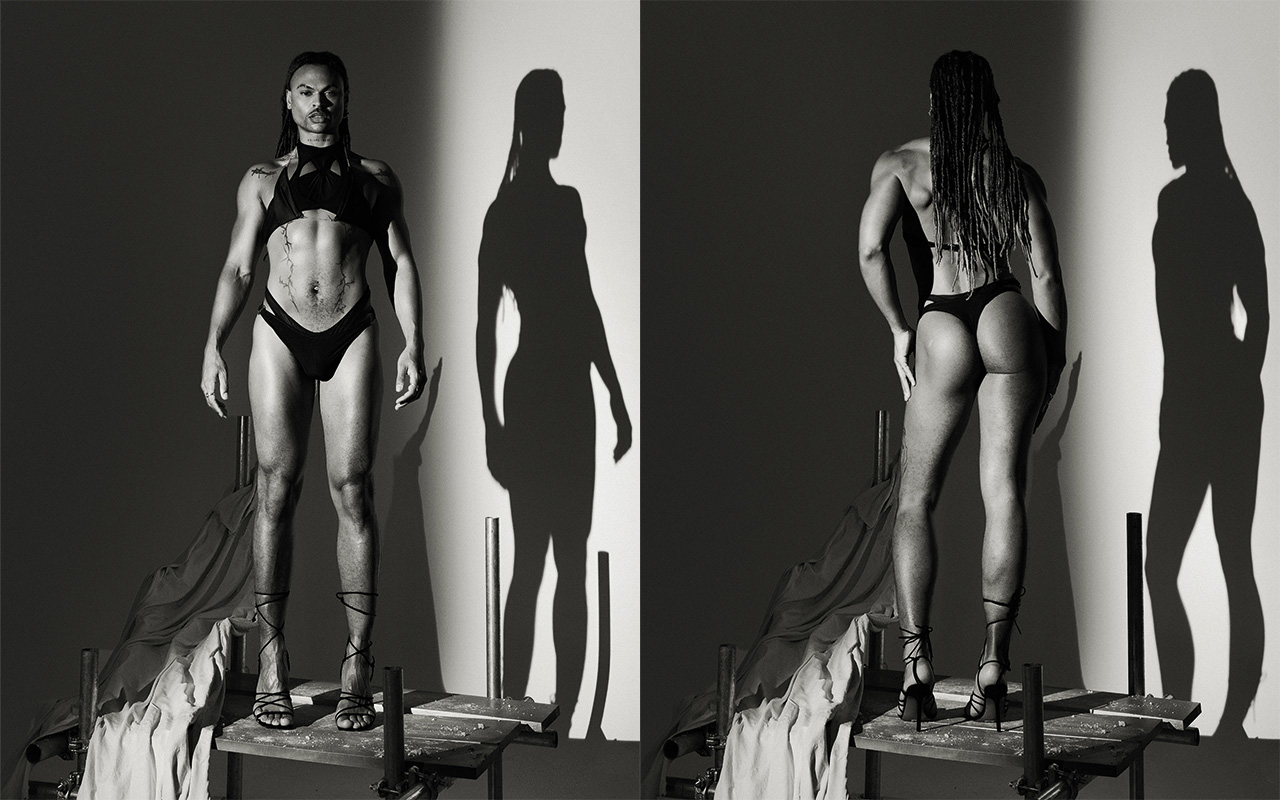
Let’s talk about the techniques you are working with on your creations. What are your favorite ones? How have you implemented them into your work?
I am very interested in creating texture and volume with both traditional hand-crafted techniques and modern digital tools. In my last collection, for example, a couple of the dresses were made of hand-knotted string that created these web-like structures that I embellished with silver beads in areas that needed highlighting to create flattering convex-concave zones. Other garments were explorations of leather manipulation. There, the material was married with latex or denim to create intricate paneling and textural dimension in contemporary suiting. In collaboration with Abi Sheng from Sapiensi, we also made jewelry that we sculpted digitally, often with the use of AI software that further informed our research on biomorphic shapes.
What do you love about fashion? What makes you keep going and working?
I love that fashion is this very raw medium of interhuman communication that becomes an indicator of societal change. It is such an honest art form and everyone lives in it, in every part of society. I cannot deny that I also love the storyteller’s energy.
What we can expect from you in the future?
I am already working on the next collection for Arakhne, but I don’t know how much I can reveal at this point. All I can say is that I am continuing my journey through Purgatory.
Stay up-to-date and follow Dimitris via Instagram and the Arakhne website.